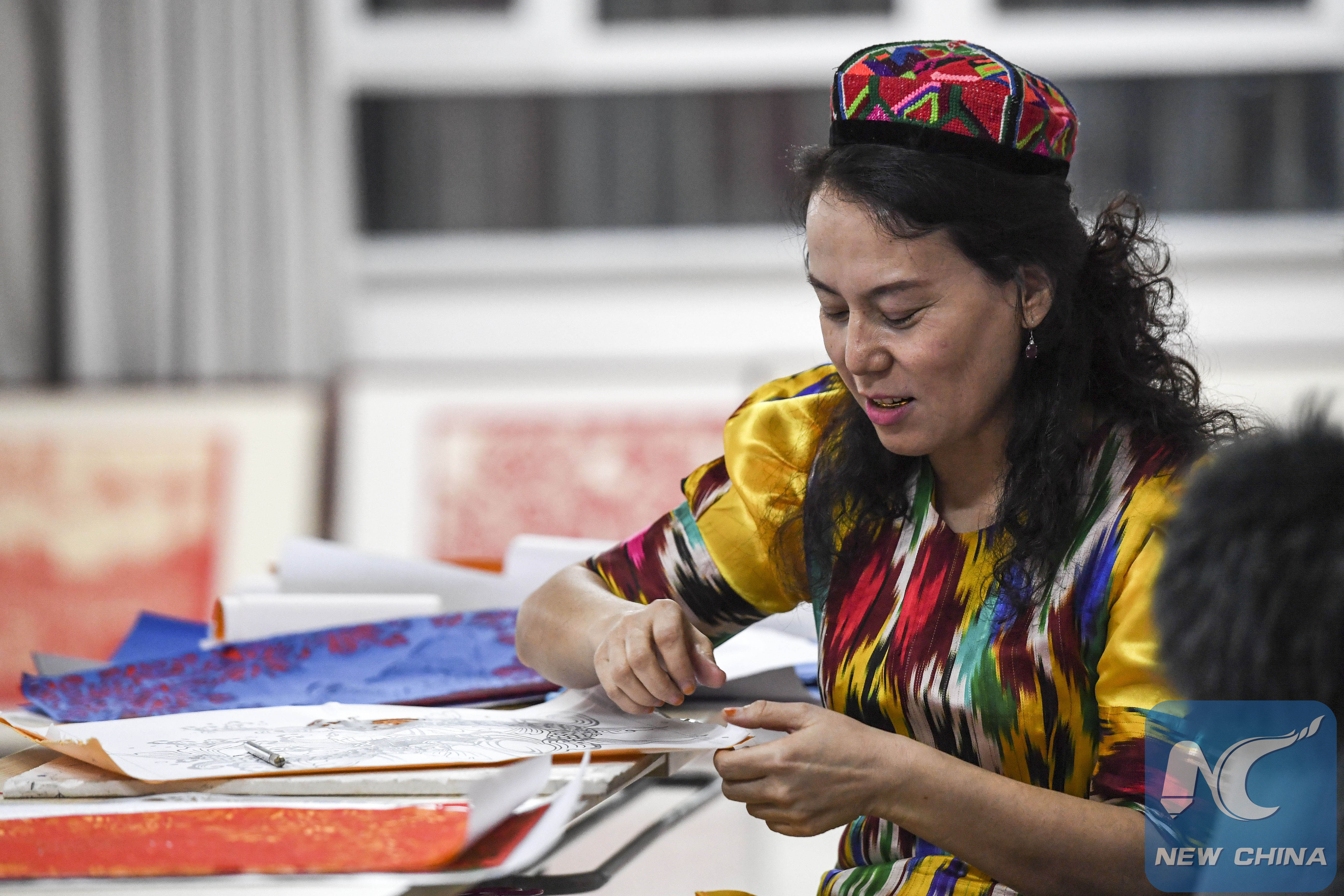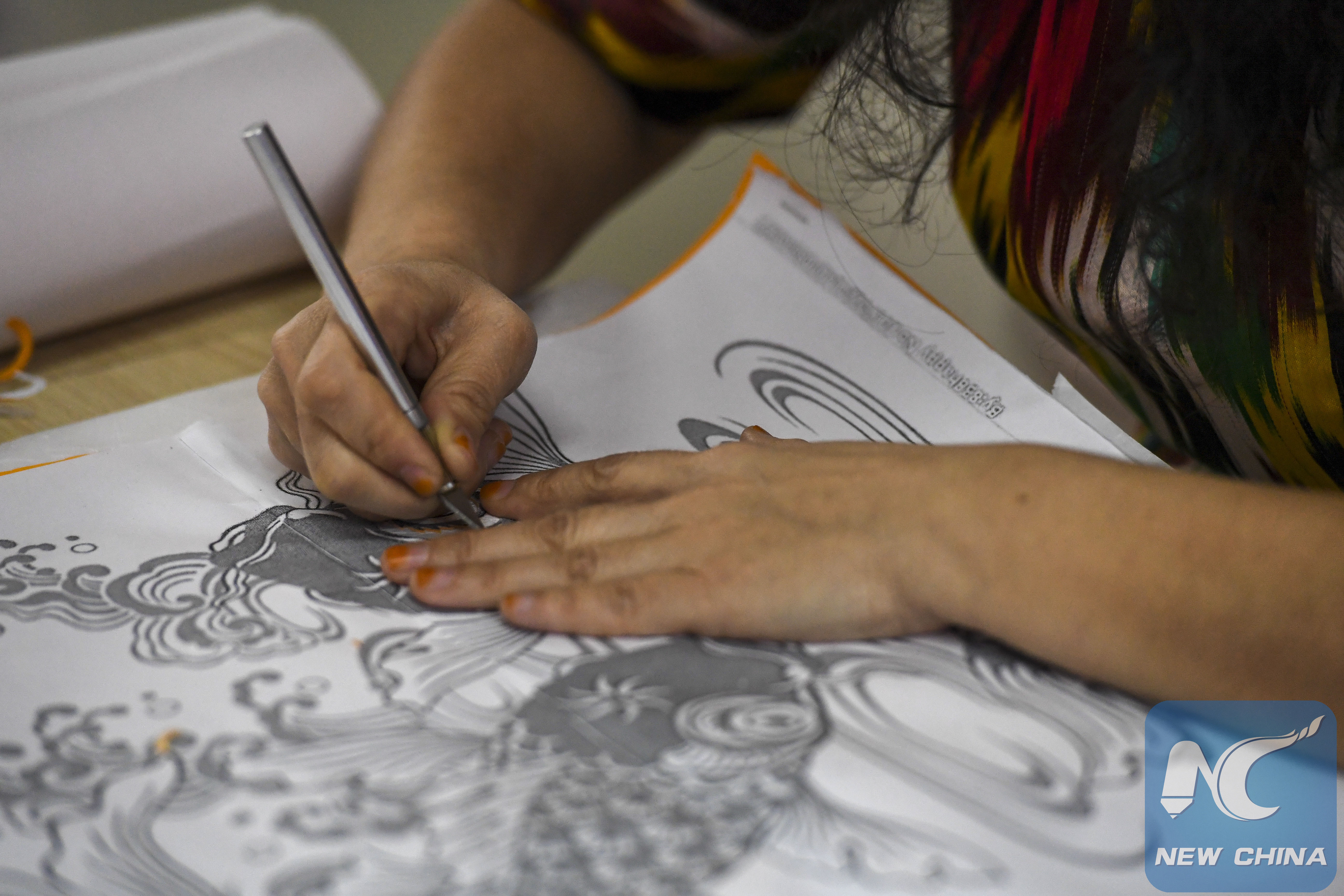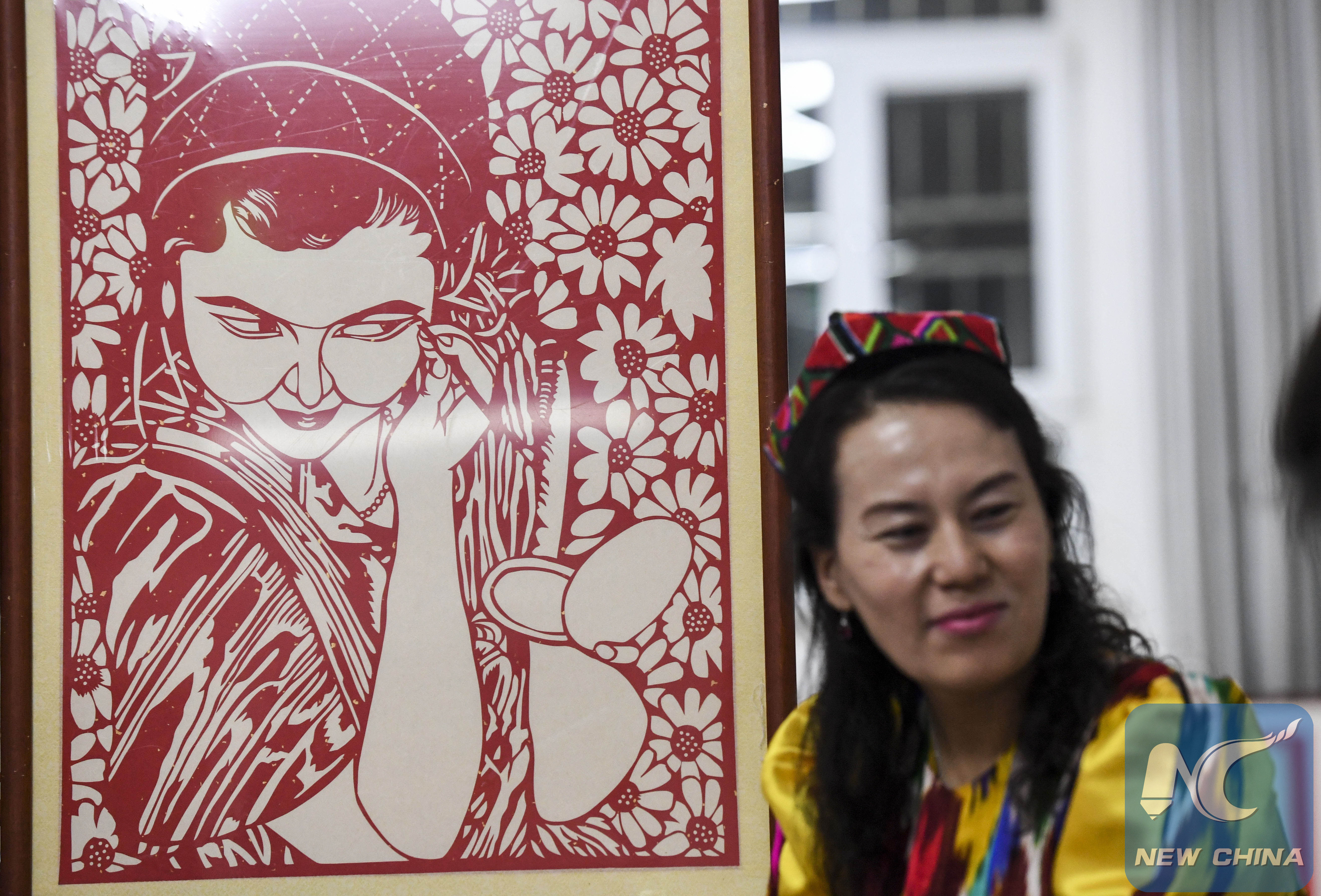
Zaorigu is working in her paper-cutting studio.
BEIJING, Jan. 10 (Xinhua) -- Paper-cutting, as its name suggests, is an art of cutting patterns into colorful paper with scissors or a knife. As a traditional folk art, paper-cutting is popular across different ethnicities in Xinjiang. Zaorigu Abdukerim, a Uyghur woman, is someone with an ardent interest.
Zaorigu is a native of Jinghe County, Bortala Mongol Autonomous Prefecture, Xinjiang. Her enthusiasm for paper-cutting began in September, 2013 when an association for the art's lovers was created in the county. When she saw the intricate figures they created, she fell in love with the craft.
Zaorigu applied to the association straight away. Since then, she has learned how to carve exquisite lines and pictures under the careful watch of her teacher.
Paper-cutting, like many good arts and crafts, takes a moment to learn but a lifetime to master. The artist needs a firm hand with a nimble touch. Any hesitation or tremble in the hand creates imperfections that could damage the whole image. Zaorigu has devoted many diligent hours to perfecting her craft.

Zaorigu is making a piece of paper-cutting with an engraving knife.
"Paper-cutting is not just a beautiful piece of art, there are stories behind each one," Zaorigu said. She tells these stories to her children as she finishes her pieces.
"Art derives from life, and I want to record lives from every ethnic group in my country," Zaorigu said. To this end, Zaorigu has spent a considerable amount of time on Internet researching patterns of different ethnicities. Once in a while, she travels to neighboring regions to see different lifestyles with her own eyes.
As more and more people join the paper-cutting association, works draw influences from the different cultures and experiences that new members bring. In one exhibition, a paper-cut on display depicts "Along the River During the Qingming Festival", or "Qingming Shanghe Tu", a famous painting of daily life in the Northern Song dynasty (960 to 1127 A.D.) in the capital of the time, Bianjing (now named Kaifeng). The painting has a vast amount of figures with vivid expressions. So the paper cutting version is impossibly intricate.
Zaorigu's work was on show too, her piece is a beautiful Uyghur lady brushing her eyebrows, the eyes almost sparkle.

Zaorigu and her work A Uyghur Woman Brushing Her Eyebrows
Of all the exhibits, Zaorigu and her fellow members are most proud of the work showcasing the 56 ethnic groups of the Chinese nation. They spent 15 days on it. It was carefully framed and hung in the very center of the exhibition hall.

56 Ethnic Groups of the Chinese Nation by Zaorigu and her fellow members
When Chinese New Year comes, Zaorigu and her friends will be busy making paper-cutting gifts for locals. In the first three months before Spring Festival each year, they make thousands of big red paper characters 'Fu' (Fortune) and send them to people across the county. To Zaorigu, it is their way of giving out fortune and good luck.
(All the pictures above are provided by Hu Huhu)

